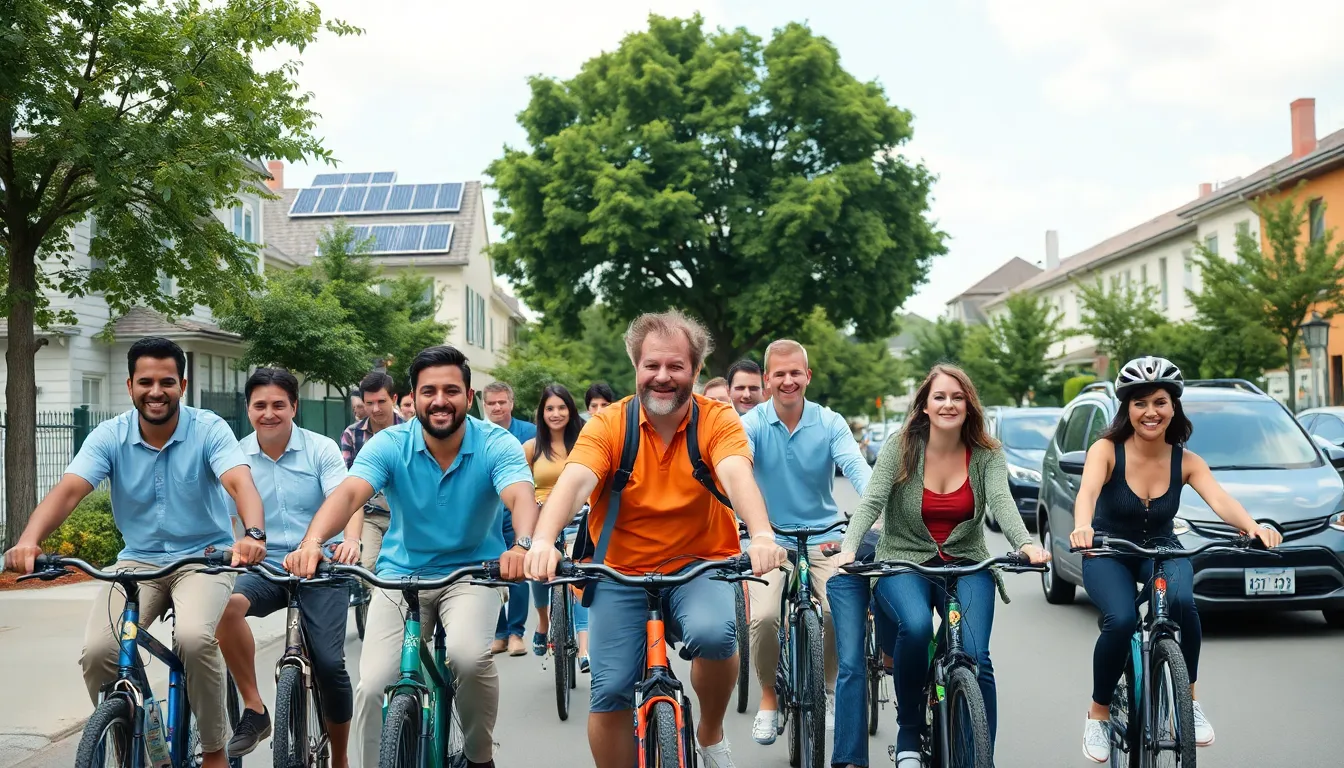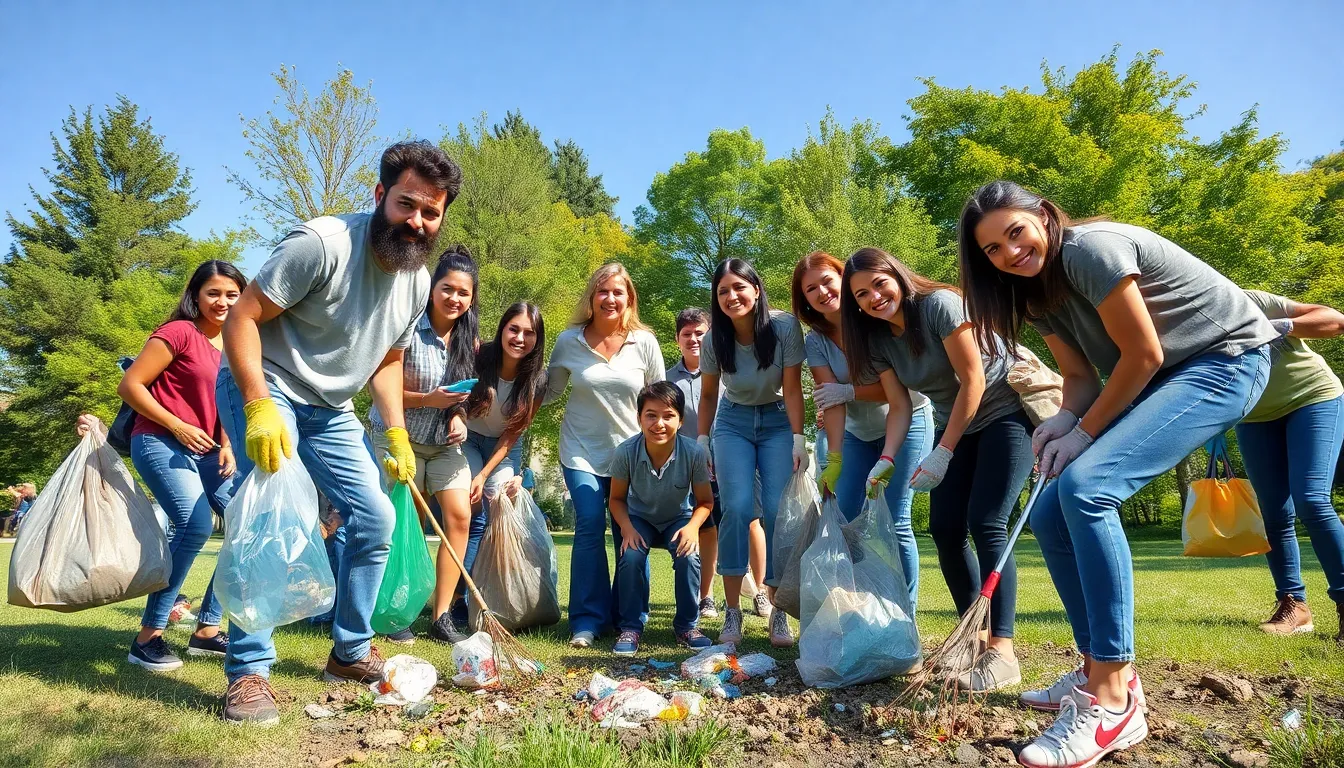Pollution is one of the most pressing challenges facing our planet today. From air and water contamination to plastic waste, its effects are felt in every corner of the globe. As communities grapple with the consequences, the need for effective pollution solutions has never been more urgent.
Innovative strategies and technologies are emerging to combat pollution, offering hope for a cleaner, healthier future. By exploring sustainable practices and empowering individuals to take action, society can make significant strides toward reducing environmental harm. This article delves into practical solutions that not only address pollution but also inspire collective responsibility for the planet’s well-being.
Table of Contents
ToggleOverview of Pollution Solutions
Pollution solutions focus on reducing contaminants that harm the environment. Several strategies aim to address air, water, and plastic pollution. These solutions include regulatory measures, technological advancements, and community initiatives.
Regulatory Measures
- Emission Standards: Governments enforce emission standards to limit harmful pollutants from industrial sources.
- Plastic Bans: Several regions implement bans on single-use plastics to reduce littering and marine pollution.
- Water Quality Regulations: Laws improve water quality by limiting discharge pollutants from wastewater treatment facilities.
Technological Advancements
- Renewable Energy Sources: Solar, wind, and hydroelectric energy reduce reliance on fossil fuels and lower air pollution.
- Carbon Capture Technology: Power plants utilize carbon capture to prevent carbon dioxide emissions from entering the atmosphere.
- Biodegradable Materials: Innovations in biodegradable plastics offer alternatives that minimize environmental impact.
Community Initiatives
- Recycling Programs: Local governments promote recycling to decrease landfill waste and conserve resources.
- Clean-Up Events: Community-organized clean-up events collect litter from public spaces, reinforcing community responsibility.
- Education Campaigns: Schools and organizations educate the public about sustainable practices to encourage behavioral change.
Individual Actions
- Sustainable Transportation: Individuals can opt for public transport, biking, or walking to reduce vehicle emissions.
- Energy Conservation: Actions like turning off lights and using energy-efficient appliances lower energy consumption.
- Waste Reduction: Practices such as composting and minimizing single-use products can significantly decrease waste.
Implementing these pollution solutions fosters a healthier environment and builds a sustainable future. Collaborative efforts among governments, communities, and individuals contribute to addressing the challenges posed by pollution effectively.
Air Pollution Solutions

Effective air pollution solutions significantly reduce harmful emissions and improve air quality. The following strategies highlight pivotal approaches, including renewable energy sources and transportation options.
Renewable Energy Sources
Renewable energy sources minimize reliance on fossil fuels, significantly cutting emissions. Key alternatives include:
- Solar Energy: Harnesses sunlight through photovoltaic cells, generating electricity without air pollutants.
- Wind Energy: Uses wind turbines to convert wind power into clean energy, contributing to lower carbon footprints.
- Hydropower: Generates energy from flowing water, offering a reliable and sustainable solution without greenhouse gas emissions.
- Geothermal Energy: Utilizes heat from the Earth’s core to produce electricity, reducing the dependency on harmful energy sources.
Transitioning to renewable energy decreases air pollution and promotes sustainable practices.
Improved Transportation Options
Enhancing transportation options plays a crucial role in reducing air pollution. Strategies include:
- Electric Vehicles (EVs): Offer zero tailpipe emissions, significantly lowering urban air pollution levels.
- Public Transportation: Efficient bus and train systems reduce individual car usage, decreasing overall emissions.
- Bicycles and Walking: Promoting non-motorized transport encourages healthier lifestyles and reduces pollution.
- Carpooling: Maximizes vehicle capacity, lowering the number of cars on the road and cutting emissions.
Investing in improved transportation infrastructure fosters cleaner air and supports sustainable urban development.
Water Pollution Solutions
Addressing water pollution involves innovative technologies and proactive strategies that target contaminants. These solutions aim to enhance water quality and protect aquatic ecosystems.
Wastewater Treatment Innovations
Innovative wastewater treatment technologies play a crucial role in removing harmful pollutants from water sources. Examples include:
- Membrane Bioreactors (MBR): MBR combines biological treatment with membrane filtration, effectively removing suspended solids and pathogens.
- Advanced Oxidation Processes (AOP): AOP utilizes powerful oxidants to break down complex organic compounds, ensuring cleaner effluents.
- Constructed Wetlands: Engineered wetlands mimic natural ecosystems to treat wastewater, offering a sustainable, low-cost solution for rural areas.
- Nanotechnology: Nanomaterials enhance filtration processes, providing high efficiency in contaminant removal.
These innovations improve the overall efficiency and effectiveness of wastewater treatment facilities.
Pollution Prevention Strategies
Pollution prevention strategies focus on reducing contamination at the source. Key strategies include:
- Source Reduction: Minimizing the production of pollutants by altering production processes or using less harmful materials.
- Green Infrastructure: Implementing green roofs, rain gardens, and permeable pavements to manage stormwater sustainably.
- Regulatory Compliance: Enforcing strict regulations on industrial discharges to control pollutant levels entering waterways.
- Public Education: Raising awareness about proper disposal methods for hazardous substances and promoting environmentally friendly practices.
These strategies collectively contribute to decreasing water pollution and fostering a healthier ecosystem.
Soil Pollution Solutions
Soil pollution significantly affects ecosystems and human health. Addressing soil contamination through sustainable practices and effective remediation techniques ensures a healthier environment.
Sustainable Agricultural Practices
Sustainable agricultural practices reduce soil pollution and enhance soil health. Key strategies include:
- Organic Farming: Utilizing natural fertilizers and pesticides helps prevent synthetic chemicals from contaminating soil. Organic methods improve soil structure and biodiversity.
- Crop Rotation: Rotating different crops replenishes soil nutrients and disrupts pest cycles. This approach minimizes chemical fertilizer use and supports ecological balance.
- Cover Cropping: Cover crops, such as clover or rye, protect soil from erosion and enhance organic matter. These plants improve soil fertility by adding nutrients back into the ground.
- Reduced Tillage: Minimizing tillage preserves soil structure and reduces erosion. This practice enhances moisture retention and fosters a healthy microbial community.
- Integrated Pest Management (IPM): Employing IPM combines biological control, habitat manipulation, and resistant crop varieties. This method reduces dependency on chemical pesticides, minimizing soil contamination.
Remediation Techniques
Effective remediation techniques clean up contaminated soil. Important methods include:
- Bioremediation: Using microorganisms to degrade pollutants in the soil enhances detoxification naturally. This technique is effective for hydrocarbon and heavy metal contamination.
- Phytoremediation: Involves planting specific plants that absorb or degrade pollutants. Certain species, like sunflowers or poplar trees, can extract heavy metals from contaminated soils.
- Soil Washing: This physical process removes contaminants using water or a solvent. Soil washing effectively separates pollutants from clean soil particles, offering immediate results.
- Thermal Desorption: Involves heating contaminated soil to enhance pollutant desorption. This method evaporates volatile contaminants, allowing for their collection and disposal.
- Chemical Oxidation: Applying oxidizing agents to contaminated soil breaks down harmful substances. This technique effectively treats organic pollutants by transforming them into less harmful compounds.
Implementing these sustainable agricultural practices and remediation techniques contributes significantly to reducing soil pollution and restoring ecological health.
Community Involvement in Pollution Solutions
Community involvement plays a crucial role in developing effective pollution solutions. Engagement through education and policy advocacy empowers individuals to make impactful changes.
Education and Awareness Programs
Education and awareness programs equip communities with the knowledge to combat pollution. These programs inform residents about pollution sources, health impacts, and sustainable practices. Workshops, seminars, and community outreach initiatives foster understanding and encourage participation. For example, local schools may incorporate environmental education into their curricula, promoting awareness from a young age. Furthermore, social media campaigns raise awareness, encouraging community members to adopt eco-friendly practices like recycling and energy conservation.
Policy Advocacy and Participation
Policy advocacy and participation mobilize communities to influence environmental regulations. Local organizations can facilitate efforts to promote environmentally friendly policies at municipal, state, and national levels. Communities often conduct petitions to support clean air and water initiatives, advancing collective goals. Participating in town hall meetings enhances community voices in policy decisions, fostering a sense of ownership. Collaborating with local governments on environmental initiatives strengthens efforts in combating pollution and promotes accountability in regulatory practices.
Addressing pollution requires a multifaceted approach that combines innovative technologies with community engagement. By embracing sustainable practices and supporting regulatory measures, individuals and communities can significantly reduce their environmental impact.
The commitment to cleaner air, water, and soil not only enhances public health but also preserves ecosystems for future generations. Each action, whether it’s adopting renewable energy or participating in local clean-up initiatives, contributes to a larger movement towards sustainability.
Through collaboration and education, society can pave the way for a healthier planet, ensuring that future generations inherit a cleaner and more vibrant world.



